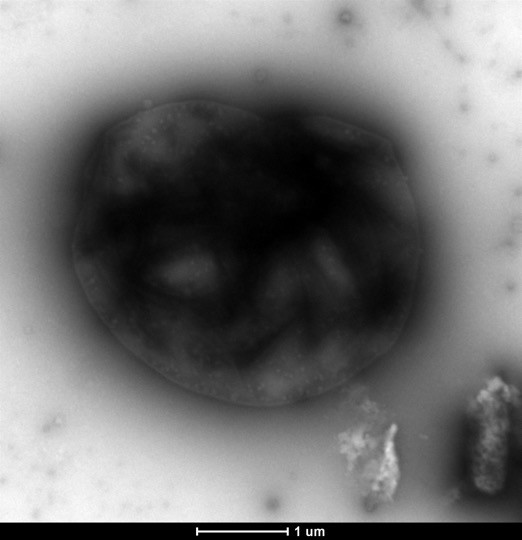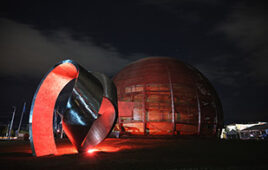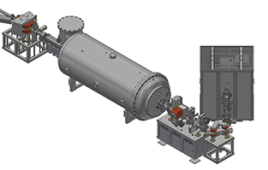
Micrograph of a synthetic bacterium that manufactures the chemical needed to capture electrons. Image: Thomas K. Wood / Penn State
A new study led by Penn State researchers is investigating the possibility of converting methane directly to electricity using bacteria—both producing electricity and halting the leaking of greenhouse gases into the atmosphere.
This process could be particularly effective near the wellheads on drilling sites, eliminating the need for long-distance transportation.
“Currently, we have to ship methane via pipelines,” Thomas Wood, holder of the biotechnology endowed chair and professor of chemical engineering, Penn State, said in a statement. “When you ship methane, you release a greenhouse gas. We can’t eliminate all the leakage but we could cut it in half if we didn’t ship it via pipe long distances.”
While the technique is not yet available on a large-scale, researchers have demonstrated the ability to convert methane into a small amount of electricity.
“People have tried for decades to directly convert methane,” Wood said. “But they haven’t been able to do it with microbial fuel cells. We’ve engineered a strain of bacteria that can.”
Microbial fuel cells convert chemical energy to electrical energy and can run on organic material including wastewater, acetate and brewing waste. However, this has come with challenges, because, while there are bacteria that consume methane, they often live in the deep ocean and are not currently able to culture in the laboratory.
“We know of a bacterium that can produce an energy enzyme that grabs methane,” Wood said. “We can’t grow them in captivity but we looked at the DNA and found something from the bottom of the Black Sea and synthesized it.”
The bacterium created in the lab uses methane and produces acetate, electrons and the energy enzyme that grabs electrons. They also added a mixture of bacteria found in sludge from an anaerobic digester—the final step in waste treatment.
The sludge contains bacteria that produces compounds that transport electrons to an electrode but the bacteria needed to be acclimated to methane can survive in the fuel cell.
“We need electron shuttles in this process,” Wood said. “Bacteria in sludge act as those shuttles.”
The flow of electrons produces electricity once the electrons reach an electrode. However, the researchers used a natural occurring bacterial genus—Geobacter—to increase the amount of electricity produced. Geobacter consumes the acetate created by the synthetic bacteria that captures methane to produce electrons.
They also ran the fuel cell with only the synthetic bacteria and Geobacter to show that an electron shuffle was needed.
After the fuel cell produced no electricity the researchers added humic acids—a non-living electron shuffle—and the fuel cell began to work. The bacteria from the sludge worked even better than the humic acids because they are self-sustaining.
“This process makes a lot of electricity for a microbial fuel cell,” Wood said. “However, at this point that amount is 1,000 times less than the electricity produced by a methanol fuel cell.”
The study was published in Nature Communications.




